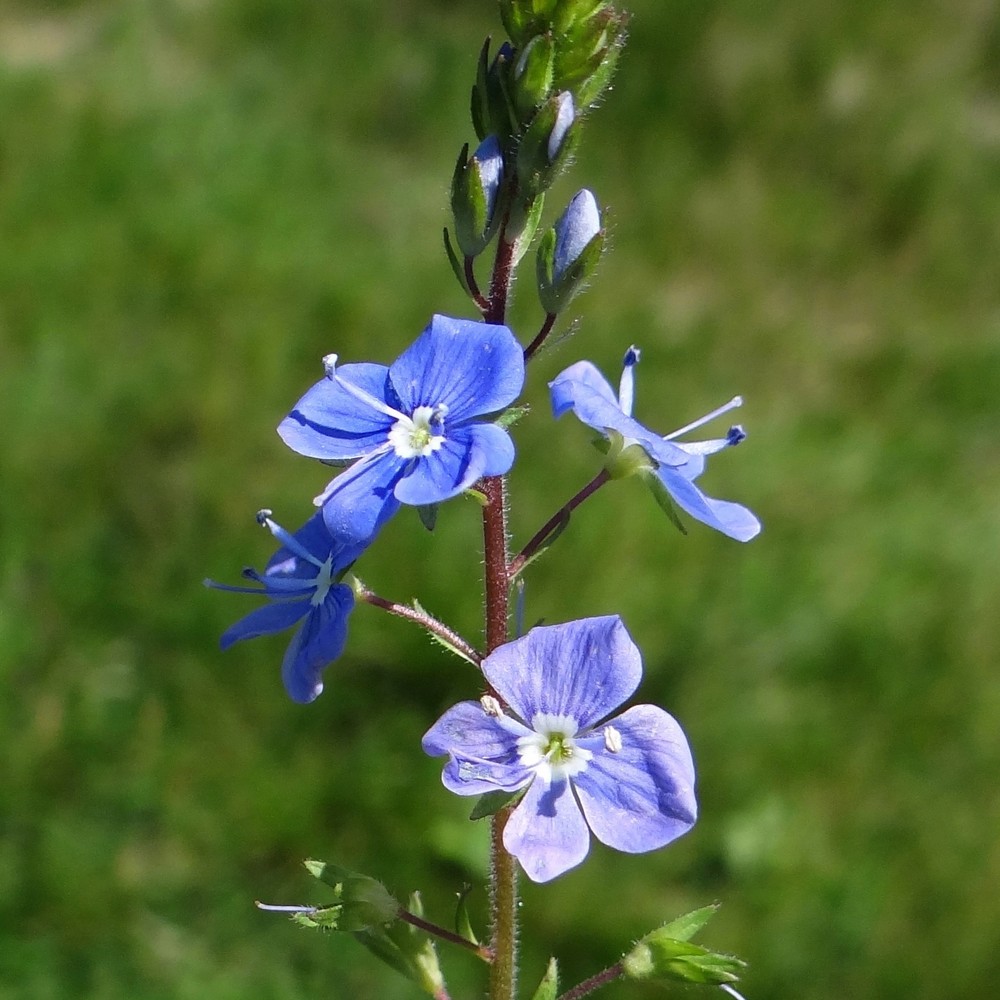Germander speedwell
(Veronica melissifolia)

Description
Veronica chamaedrys, the germander speedwell, bird's-eye speedwell, or cat's eyes, is a herbaceous perennial species of flowering plant in the plantain family Plantaginaceae. Veronica chamaedrys can grow to 50 cm (20 in) tall, but is frequently shorter, with stems that are hairy only along two opposite sides. The leaves are in opposite pairs, triangular and crenate, sessile or with short petioles. The flowers are deep blue with a zygomorphic (bilaterally-symmetrical) four-lobed corolla, 8–12 mm (0.3–0.5 in) wide. The capsules are wider than they are long. The blossoms of this plant wilt very quickly upon picking, which has given it the ironic name "Männertreu", or "men's faithfulness" in German. Veronica chamaedrys is a common, hardy turf so-called weed when it invades turf and lawns. It creeps along the ground, spreading by sending down roots at the stem nodes. It is propagated both by seed and stem fragments. Leaves may defoliate in the summer and winter but the stems will grow again next season. Unlike at least five other common speedwell species, such as corn speedwell (Veronica arvensis), the leaves are opposite both on the upper and lower parts of the plant. See the Veronica for special weed control considerations. This species is native to Europe and Asia west of the Ural Mountains. It is found on other continents as an introduced species. Veronica chamaedrys has been used in traditional Austrian herbal medicine internally (as tea) for disorders of the nervous system, respiratory tract, cardiovascular system, and metabolism. In 18th century Britain, the plant had the reputation of being a cure for gout as well as being popular for making tea, the latter being so prevalent that the plant was nearly eradicated from London during the 18th century. Veronica is the largest genus in the flowering plant family Plantaginaceae, with about 500 species; it was formerly classified in the family Scrophulariaceae. Common names include speedwell, bird's eye, and gypsyweed. Taxonomy for this genus is currently being reanalysed, with the genus Hebe and the related Australasian genera Derwentia, Detzneria, Chionohebe, Heliohebe, Leonohebe and Parahebe now included by many botanists. Monophyly of the genus is supported by nuclear ribosomal internal transcribed spacer (ITS) and cpDNA. The taxa of the genus are herbaceous annuals or perennials, and also subshrubs, shrubs or small trees if Hebe is included.
Taxonomic tree:







